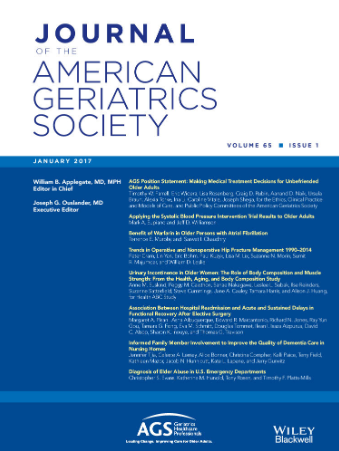Mortality and Function After Hip Fracture or Pneumonia in People With and Without Dementia
Abstract
Background
The extent to which disruptive surgical or medical events impact mortality and function is critical for anticipatory planning and informing goal-aligned care.
Methods
Using Health and Retirement Study data (2008–2018), we employed propensity score matching to compare the impact of hospitalization for hip fracture (a surgical event) or pneumonia (a medical event) among people with dementia to two groups: (1) people with dementia who did not experience these events; and (2) people without dementia who experienced an event. Dementia status was determined using validated cognitive assessments (Hurd method); hip fracture and pneumonia were identified from Medicare claims. Outcomes were 1-year mortality and function, defined as a summary score of requiring assistance with 6 ADL's and 5 IADL's, with higher scores indicating better function.
Results
Among people with dementia, predicted 1-year mortality was higher among those with hip fracture (35.4%) versus those without hip fracture (14.8%), with similar patterns for pneumonia (49.6% vs. 13.0%). Among people with dementia, function declined abruptly at time of hip fracture (−2.09 [95% CI −2.94, −1.25]) and continued to decline after (−0.48 [95% CI −0.87, −0.09]). There were similar patterns for pneumonia (drop at time of pneumonia of −1.49 [95% CI −2.0, −0.97] and after −0.05 [95% CI, −0.29, 0.19]). Compared to people without dementia with hip fracture, people with dementia had higher 1-year mortality (35.4%) versus people without dementia (24%), with similar patterns for pneumonia (49.6% vs. 39.7%). Function stabilized for people without dementia after hip fracture (−0.03, 95% CI −0.22, 0.16), which was significantly different than people without dementia (p < 0.0001). Function improved for people without dementia after pneumonia (0.13, 95% CI 0.03, 0.24), but was not statistically different than for people with dementia (p = 0.17).
Conclusion
Disruptive events such as hip fracture or pneumonia substantially alter the clinical trajectories of people with dementia.

 求助内容:
求助内容: 应助结果提醒方式:
应助结果提醒方式:


